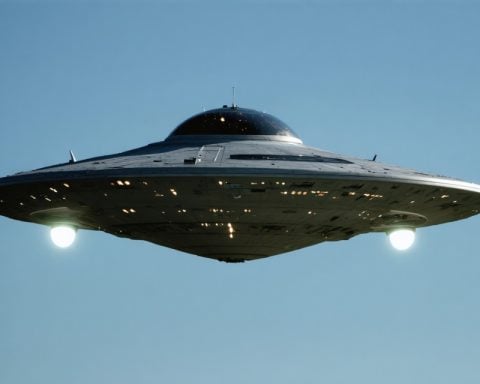Milestone Achievement for ESA’s Proba-3 Mission
The European Space Agency (ESA) has taken a significant leap in space exploration with its innovative Proba-3 mission, which recently entered a groundbreaking formation-flying phase. This mission involves two satellites that are now meticulously positioned 150 meters apart in orbit, a distance equivalent to one and a half football fields.
Launched on December 5, 2024, from the Satish Dhawan Space Centre in India, the Proba-3 satellites have achieved a critical milestone with their successful separation. This strategic maneuver was completed on January 14, at an altitude of 60,000 kilometers, traveling at an impressive speed of one kilometer per second.
As these spacecraft begin drifting away from each other, engineers in Belgium monitor their systems closely, preparing for the next stage of the mission. Equipped with advanced positioning technologies, including optical cameras and laser sensors, the satellites will maintain their exact relative positions to facilitate the creation of artificial solar eclipses.
This precision is vital for studying the solar corona, as the Occulter satellite will project a shadow onto the Coronagraph satellite’s sensitive instruments. This setup will mimic the functionality of a single, colossal spacecraft, aiming to achieve millimeter-level accuracy for extended durations.
As Proba-3 gears up for its operational phase, set to commence in March, the scientific community eagerly anticipates the insights these celestial observations could unveil about our Sun.
Implications of Proba-3: Redefining Space Exploration
The European Space Agency’s (ESA) Proba-3 mission represents not only a technological marvel but also a pivotal moment for the future of space exploration and its broader implications for society and the environment. As these twin satellites pioneer formation flying, they set the stage for new scientific discoveries that could unravel the mysteries of solar dynamics and their impact on Earth.
By providing unprecedented access to the solar corona, Proba-3 may unveil critical insights into solar activity, potentially enhancing our understanding of space weather, which can disrupt communication systems, power grids, and satellites on Earth. As our dependence on technology intensifies, understanding these celestial phenomena becomes paramount, underscoring the mission’s potential influence on the global economy.
Moreover, the mission’s innovative techniques in formation flying could revolutionize satellite operations, allowing for collaborative endeavors among nations and corporate entities, thereby fostering international partnerships. This approach may usher in a new era of cost-effective space exploration, where multiple small satellites work in synchronized endeavors, reducing environmental waste associated with traditional launches.
Furthermore, as global interest in space increases, the Proba-3 mission serves as a reminder of the balance between exploration and planetary stewardship, highlighting the need for sustainable practices in an era where space debris poses a rising threat. The future trends hinted at by this mission extend beyond scientific inquiry—essentially laying the groundwork for humanity’s next chapter in the cosmos while urging a collective responsibility to protect both Earth’s environment and the greater space infrastructure.
ESA’s Proba-3: Pioneering New Horizons in Solar Research
Milestone Achievement for ESA’s Proba-3 Mission
The European Space Agency’s (ESA) Proba-3 mission marks a groundbreaking advancement in the frontier of space exploration. With its unique formation-flying approach, this mission involves two satellites expertly aligned 150 meters apart, a configuration not previously achieved by any other space mission.
Key Features of the Proba-3 Mission
The Proba-3 mission leverages state-of-the-art technologies to maintain precision positioning between its satellites, the Occulter and the Coronagraph. This technology is critical as it enables the creation of artificial solar eclipses. The Occulter satellite casts a shadow onto the Coronagraph satellite, which is equipped with sensitive instruments to observe and analyze the Sun’s corona. This innovative setup mimics a massive single spacecraft, achieving millimeter-level accuracy necessary for detailed solar observations.
Use Cases and Scientific Goals
The primary objective of Proba-3 is to study the solar corona, the outer layer of the Sun’s atmosphere, which remains elusive and poorly understood due to its brightness compared to the solar disk. The enhanced imaging provided by the Coronagraph will enable scientists to better understand solar phenomena such as solar flares and coronal mass ejections, which can significantly impact space weather and, consequently, technology on Earth.
Innovations and Technologies Employed
Proba-3 employs advanced optical cameras, laser sensors, and GPS-like positioning systems. These innovations allow the satellites to maintain their formation with remarkable precision, ensuring that scientific observations can be made consistently over extended periods of time. This formation-flying technology represents a significant leap in satellite capabilities and paves the way for future missions in space exploration.
Market Analysis and Future Insights
As space agencies around the globe invest in innovative satellite technology, ESA’s Proba-3 is poised to become a benchmark for future missions. Its successful operation could inform the design and deployment of additional formation-flying missions, expanding our understanding of celestial mechanics and solar phenomena.
Limitations and Challenges Ahead
Despite the promising prospects, the Proba-3 mission faces challenges, notably the inherent complexities of maintaining such precise positioning over time. Engineers will need to continuously address potential anomalies in satellite trajectory, which could arise from gravitational influences or interferences in the satellites’ systems.
Pricing and Investment
The Proba-3 mission represents a significant investment by ESA, with costs estimated in the tens of millions of euros. As the mission progresses through its operational phase, the financial implications of maintaining the spacecraft and supporting research activities will be closely monitored by stakeholders.
Conclusion: A Bright Future for Solar Research
With the operational phase set to commence in March, the scientific community eagerly anticipates the findings Proba-3 will produce. The insights gained from this mission could revolutionize our understanding of solar dynamics, providing critical data to predict and mitigate the impacts of solar activity on Earth.
For more information on ESA’s missions and projects, visit the European Space Agency’s official website.



















